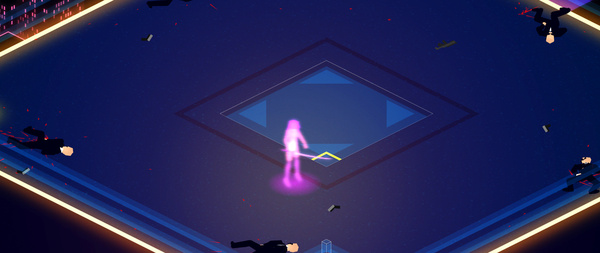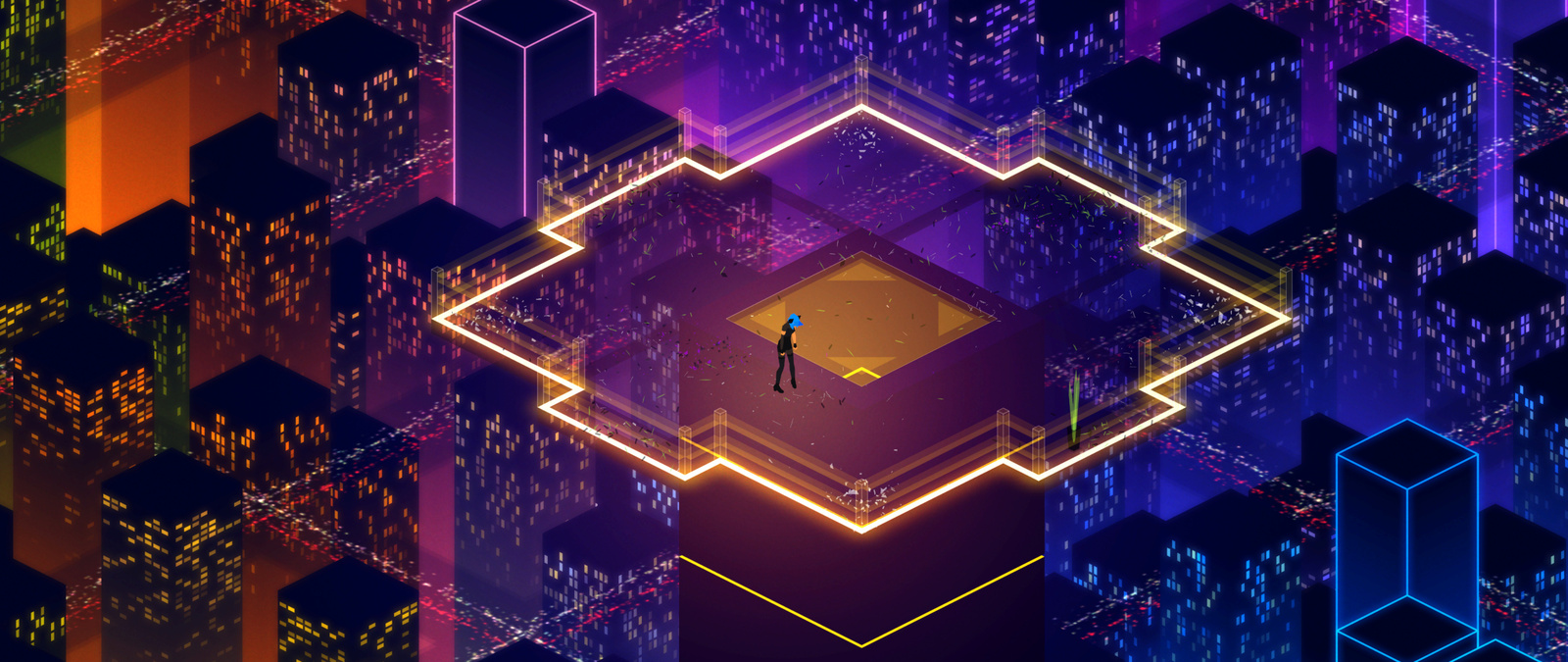Lithium City

Lithium City takes place in an amazing isometric world, filled with low polygon count enemies, lightning fast game mechanics, a heart thumping soundtrack, and relentless challenging stage after stage of cyberpunk fighting. The color scheme is hypnotizing and fits perfectly with the music. Although the focus of the gameplay is on fighting, there is a considerable variety of levels that include sword fighting, dodging helicopter mounted cannons and a fun shufflepuck court. There is no dialogue. The story is complete, while also leaving itself open to a wide amount of interpretation. It’s a fun game that’s about the right length for an independent tile. However, parts of it can be quite grueling and difficult, making it inaccessible to those who don’t have the dexterity for fast paced, unforgiving, fighting games.
Lithium City started out strong. The opening level eases the player into a world where you need to kill armed enemies in order to break out of a facility. The keyboard and mouse controls are almost useless. The game is designed for a controller, with the two primary actions of firing and dashing usable from both the triggers and the game pad buttons. There are aspects of the controls that do not feel polished at all, made even more difficult by the isometric level design. I found the best combination was to aim with the right thumb-stick and shooting with the triggers when precision is needed, but switching to buttons for sword fighting sequences.
The save system is not entirely clear. Checkpoints are few and far between, leading to restarts of entire sections even after clearing several rooms. It may have been designed that way in an attempt to increase the challenge and difficulty. However, it just increases frustration and pads out the game length. Most games with difficult segments have a sense of relief or accomplishment when finally making it through those challenges. Lithium City seems to be lacking that same rush when you finally make it to the next chapter.

At least on the PC version, there also seemed to be moments in the game with intense slowdown, frame rate drops and performance issues. This often occurred after a lot of re-spawns in more difficult levels, increasing my personal frustration.
The music for Lithium City is exceptional. It keeps the player pushing forward through the most challenging aspects of the game. The music also fits perfectly with the beautifully stylized mesh of neon colors and transparent textures in a glowing cyberpunk setting. I really enjoyed all the artwork in this game, and how it pulls the player into an immersive world.
Summary
Lithium City is not just a challenging game, but a difficult one. There is a story, but it’s rather abstract, open to interpretation, and isn’t the focus of the adventure. The artwork is mesmerizing, and intense fight sequences often lead a satisfying trail of broken polygons littered on the ground. I wanted to enjoy this game the same way I enjoyed the Hotline Miami series. However, the difficultly just lead to frustration. Out of nearly ten hours I put into Lithium City, I’m guessing that at least two to three of them were spent on the final level. The last boss has three life bars and zero checkpoints. Beating her feels like it needs intense training, to the point where each attack must be mentally automatic and effortless.
Overall I did enjoy a lot of aspects of this game, but it had enough flaws and a high enough difficulty curve that I felt like I couldn’t give it a high a rating as other games in this genre. It’s a fun adventure, but not a title for the casual gamer. It’s about the right length for its price and for being an independent title. If you enjoy very challenging games with techno-punk music, a variety of game mechanics, and beautifully surreal neon low-polygon count graphics, Lithium City is a beautiful yet frustrating adventure in the cyberpunk genre.